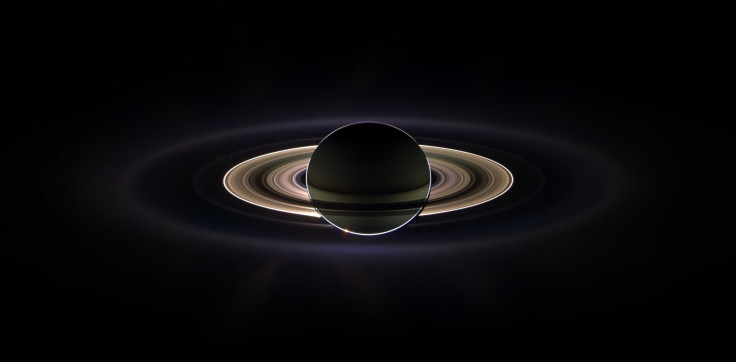Earth Gets Its Portrait Taken From Saturn And Mercury, How To 'Wave To Saturn' Beginning On July 19 [LIVE STREAM]
On Friday and Saturday, Earth will be seen by NASA’s Cassini and Messenger spacecraft as they take photos of Saturn and Mercury, respectively, as part of their current missions. NASA has set up several social media campaigns for this opportunity to “wave at Saturn.”

NASA’s Cassini spacecraft is currently in orbit around Saturn but will be facing Earth for a few days as it observes the gas giant. The space agency reports Cassini is in place to take photos of Earth beginning on Friday. On that day, Cassini will be approximately 900 million miles from Earth, but Saturn will be backlit by the sun giving the spacecraft the perfect opportunity to view the planet’s rings in detail. According to NASA, Cassini will be able to capture the planet’s ring particles and observe the different patterns that make up the rings of Saturn.
The Earth will be in the background during this observational period, and NASA has set up “Wave to Saturn” to encourage amateur astronomers and others to take part in the galactic portrait. NASA has set up a Flickr page where users can share images. Fans on Twitter can share their photos by tagging their posts with “#wavetosaturn.” Cassini will be taking photos of Earth on Friday from 2:27 p.m. PDT to 2:42 p.m. PDT, 5:27 p.m. EDT to 5:42 p.m. EDT. NASA has also provided several charts that will help people find Saturn. Earth will only appear as a tiny pixel, a pale blue dot in the photo, and while Cassini’s photo of Earth is getting all the attention, another NASA spacecraft will be taking photos of the planet from an even closer location.
Earth will be in the background in images that will be taken by NASA’s Messenger spacecraft, currently orbiting around Mercury. The Cassini photos will consist of North America and parts of the Atlantic Ocean while Messenger will take photos of Europe, the Middle East and Central Asia, NASA notes.

Messenger will be taking photos of the area around Mercury in hopes of finding a moon. According to Hari Nair, a planetary scientist from the Johns Hopkins University Applied Physics Laboratory, Messenger will capture Earth, the moon and Mars on Friday and Saturday but reminds individuals to not expect a detailed image. “In practice, all we're going to see are two bright dots,” Nair said in the press release. Mercury does not have a moon or any natural satellite orbiting it, and the Messenger mission hopes to solve that mystery.
NASA has set up a live stream, beginning at 2 p.m. PDT, 5 p.m. EDT, on Friday, which will include Cassini mission scientists and can be viewed below.
© Copyright IBTimes 2024. All rights reserved.






















